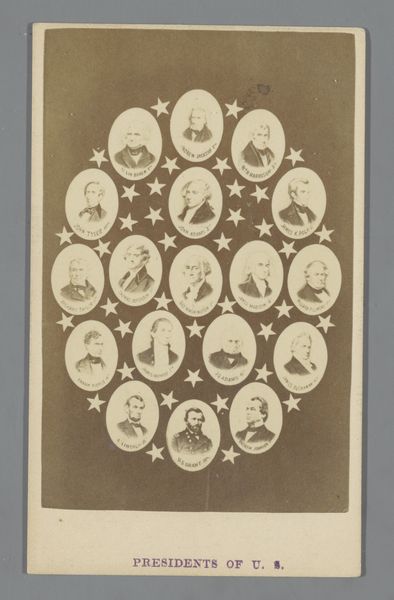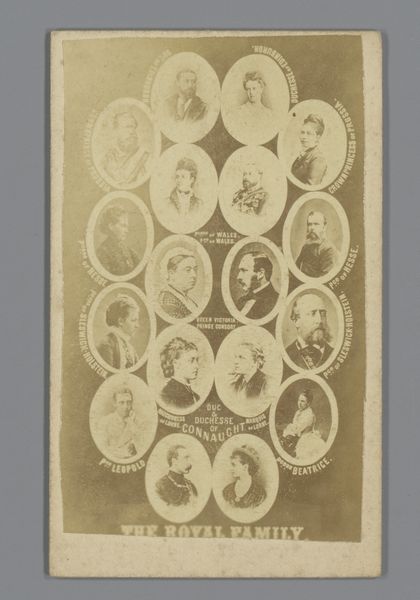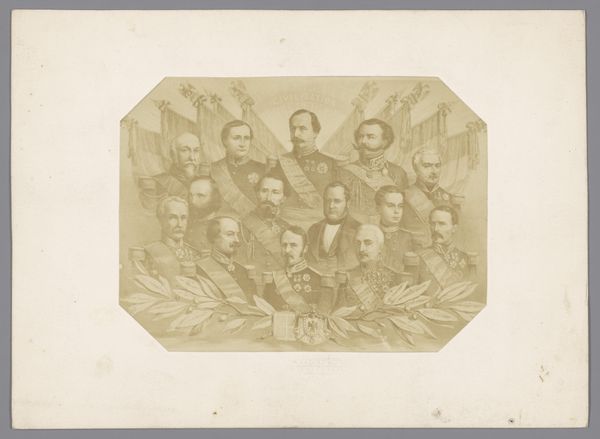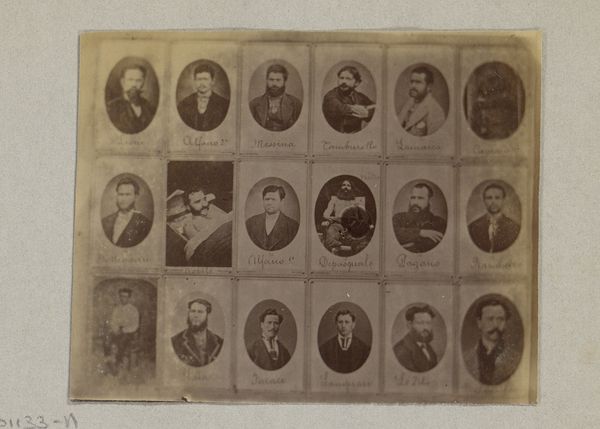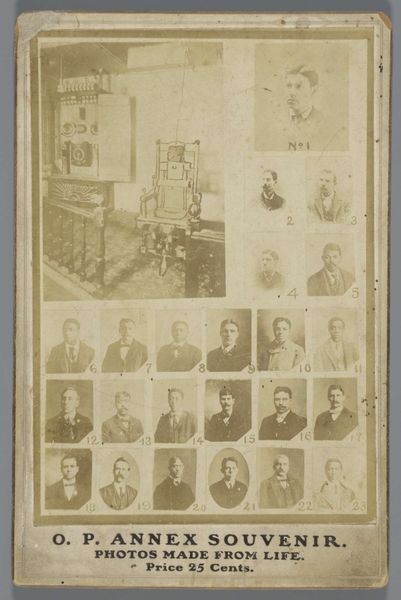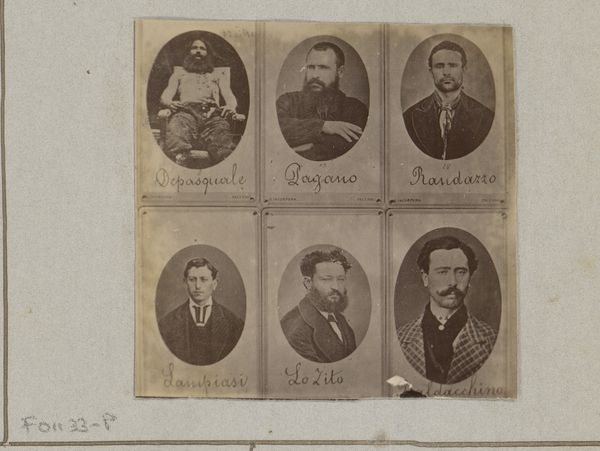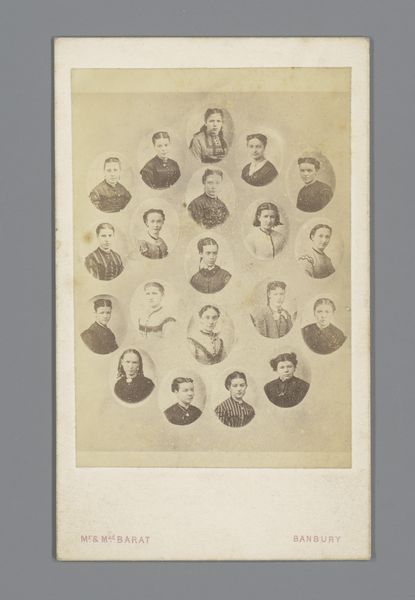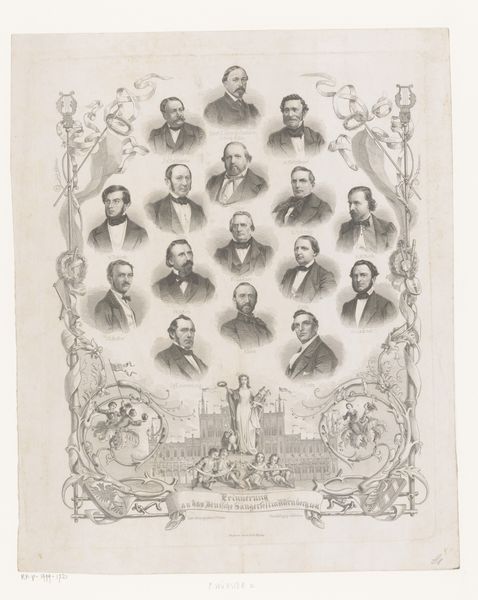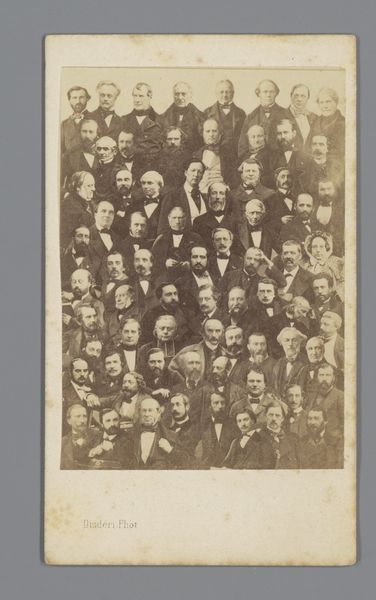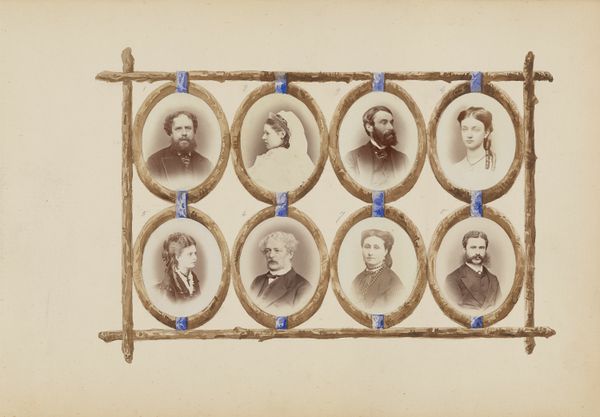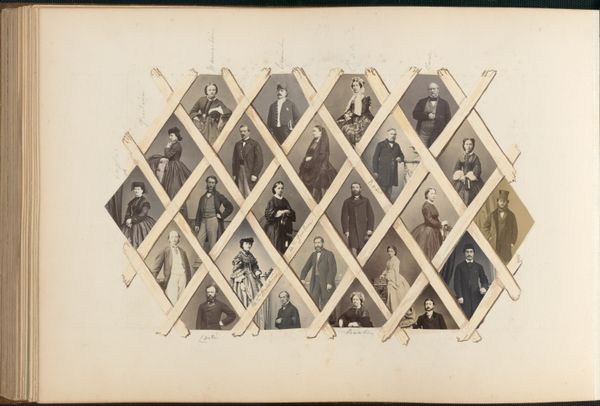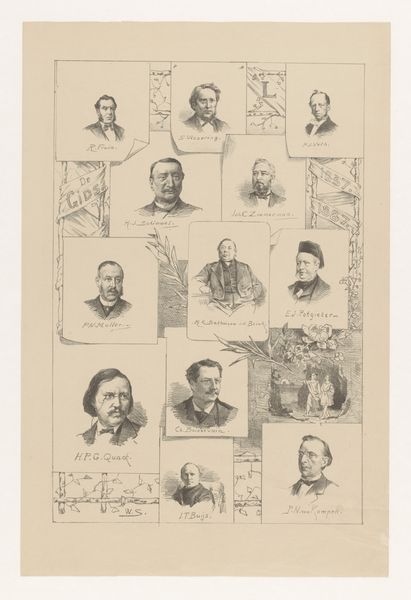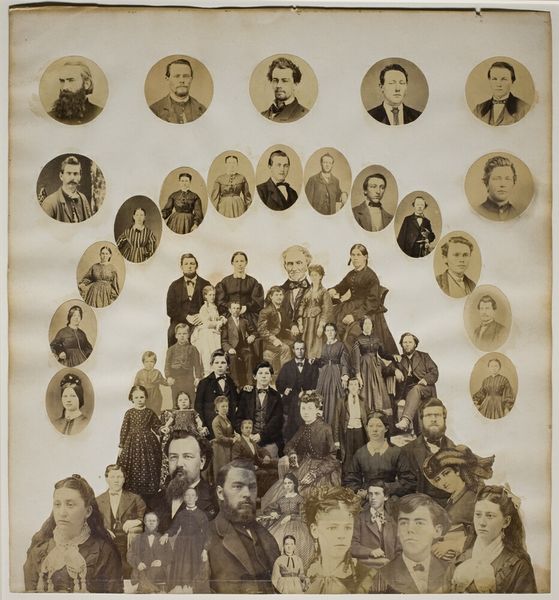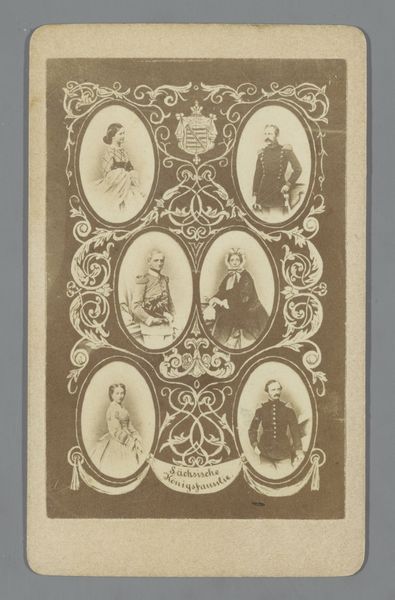
Collage van miniatuurportretten van deelnemers aan het Congres van Berlijn in 1878 1878
0:00
0:00
print, photography, albumen-print
#
toned paper
# print
#
photography
#
group-portraits
#
history-painting
#
albumen-print
Dimensions: height 100 mm, width 62 mm
Copyright: Rijks Museum: Open Domain
Curator: Looking at this peculiar photo collage – "Collage van miniatuurportretten van deelnemers aan het Congres van Berlijn in 1878"– I find myself drawn into this arrangement of important faces from the past. It’s almost like staring into a very serious, very official yearbook from a particularly consequential historical event. Editor: Yearbooks? More like mugshots! All these chaps looking very severe in sepia, boxed in oval frames. You have to wonder what drove this piece... beyond sheer power. All those albumen prints meticulously arranged – I see history in the making, or at least, history being packaged. Curator: The Congress of Berlin attempted to redraw the map of the Balkans after the Russo-Turkish War, and this print really visualizes that geopolitical chessboard. It is definitely an interesting piece; it feels at once strangely personal and incredibly formal. Do you think about its social role at all? Editor: Definitely. Consider albumen prints were incredibly popular then – a tangible record in the age of expanding empires. But it’s also about image control, don't you think? Each portrait, perfectly lit and framed, reinforcing a certain power structure. Who had the power to be included? Who made and distributed this print? Was it commissioned, mass-produced? These were tools! Curator: Yes! It begs so many questions. These are not just photographs, right? They are documents of power. And look at those almost angelic figures watching over these historical giants. It adds an odd ethereal quality, almost as if they're blessed, despite the messy realities of the Congress. Editor: It's fascinating how this 'collage' uses emerging technologies of image-making to affirm existing hierarchies. You frame it, literally and figuratively, in sepia tones and suddenly those hard treaties feel somehow antique, permanent, immutable. Curator: And in doing so, history is made present and visually accessible for all to observe; everyone had a place to envision these faces, to contemplate the powerful few involved in restructuring an entire region. A simple image can be truly powerful in shaping not just perceptions of history, but the narrative we tell ourselves about who shapes it. Editor: It's sobering to consider how deeply intertwined art and power have always been, and what a ‘simple image’ truly conceals under the seemingly innocent facade. I keep going back to how those materials and the process reflect – or mask – the complicated mechanisms underneath.
Comments
No comments
Be the first to comment and join the conversation on the ultimate creative platform.
